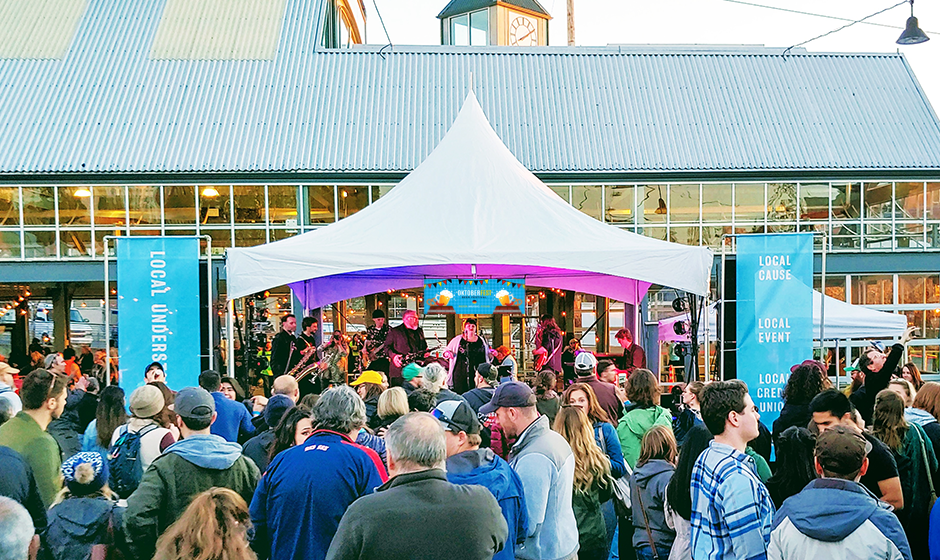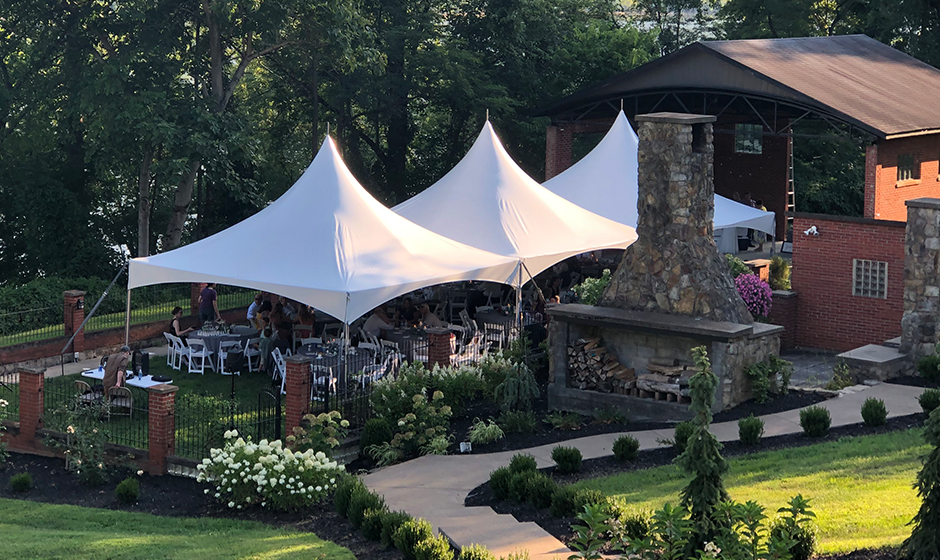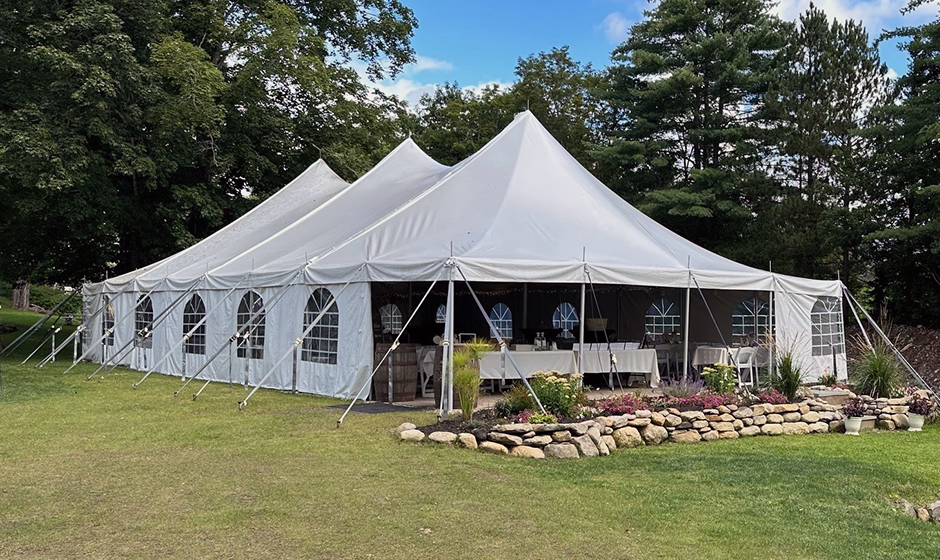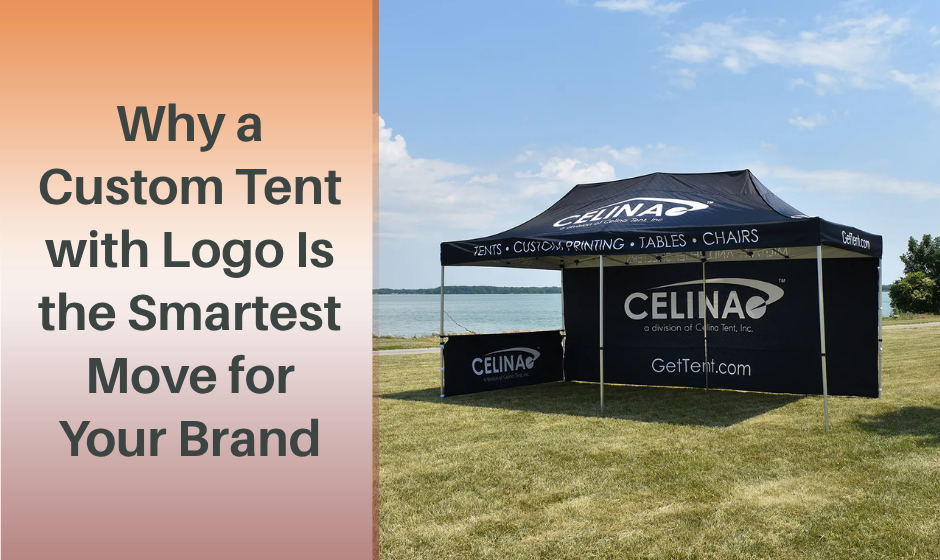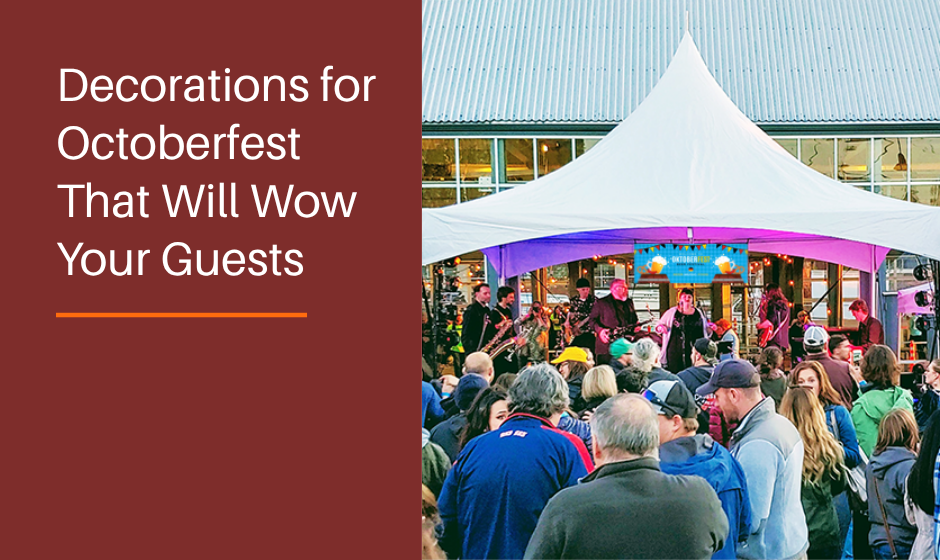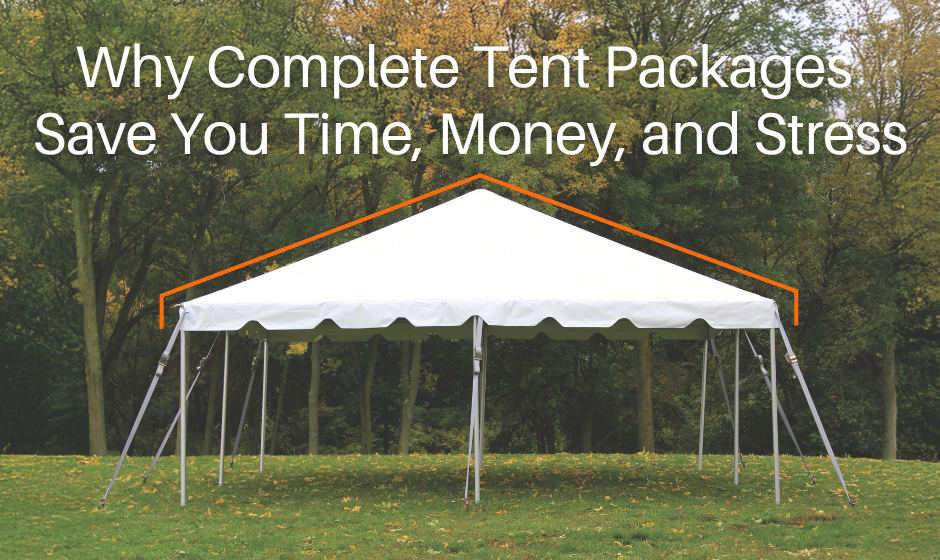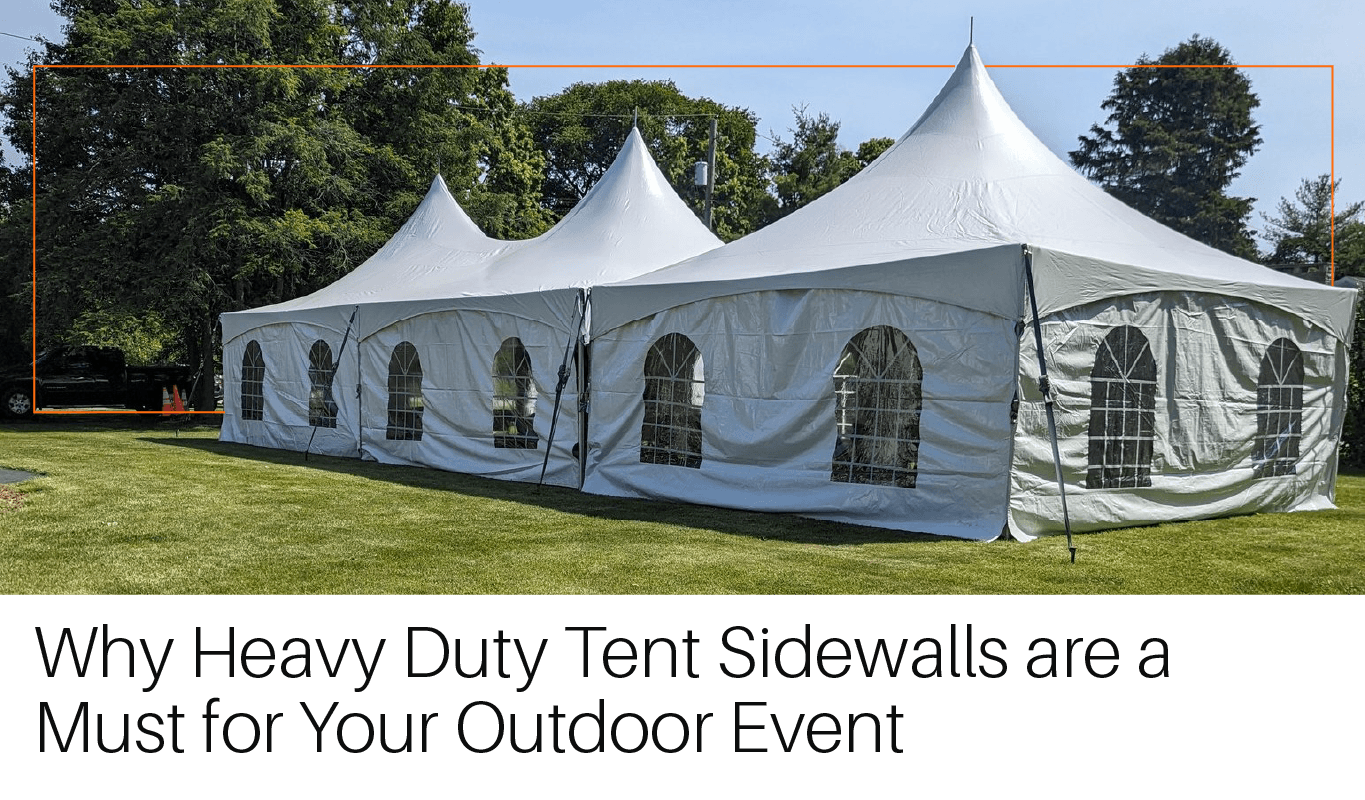Tent Top Replacement Guide: How to Choose the Right Fit and Avoid Costly Mistakes
Every tent has a lifespan. Even the best commercial tops eventually show signs of wear — the kind you can ignore for a little while, until suddenly you can’t. Most tent professionals have been there: you’re halfway through a busy install, the crew is stretching the fabric over the frame, and something doesn’t feel right. Maybe the top isn’t tensioning like it used to. Maybe sunlight is creeping through spots that should be opaque. Or maybe, worst of all, a seam gives way at the last moment.

A tent top replacement isn’t just a budget line item — it’s a safeguard for durability, safety, crew efficiency, and client trust. In this guide, we’ll walk through everything you need to know about when to replace a tent top, how to choose the right fabric, why fit matters more than most people realize, and how to avoid the “almost fits” that end up costing far more down the line.
Recognizing When You Need a Tent Top Replacement
It’s easy to delay replacing a tent top, especially during peak season. But the earlier you identify the signs, the more money and stress you save later.
Tears, Holes, and Fraying Edges
Just like a favorite jacket, tent tops tell you when they’ve had enough. Tiny holes begin showing around stress points, seams grow thinner, and edges start fraying after too many installations. Small damage can seem harmless at first — but once the tent stretches under tension or winds pick up, those small tears become major failures.
Sun Damage and UV Weakening
UV exposure is the silent killer of vinyl. Over time, sunlight breaks down coatings, causing the top to become chalky or brittle. If your tent top feels stiff instead of flexible, that’s a major warning sign. A brittle top is far more likely to crack during installation or fail under wind pressure.
Leaks and Water Intrusion
A tent is only as good as its ability to keep water out. Once a top begins leaking — not from a single puncture but from multiple aging points — it’s rarely worth repairing. Persistent leaks also damage flooring, lighting, décor, and electronics placed underneath, turning a small maintenance issue into a costly multi-system failure.
Uneven Tension, Sagging, or Stretching
Fabric stretches as it ages, but excessive stretching causes poor tensioning. Loose fabric invites water pooling, which adds hundreds of pounds of weight to the frame. This is how legs bend, cables snap, and fittings become damaged.
A sagging top doesn’t just look unprofessional — it inflicts long-term structural damage on your frame system.
The Real Cost of Holding Onto a Damaged Tent Top
It may seem smart to extend the life of an old top “one more season,” but small issues eventually become expensive problems.
Some of the hidden costs include:
- Longer Installations: Crews waste hours adjusting and fighting stretched fabric.
- Increased Labor Costs: More tensioning and repositioning equals more crew time.
- Client Complaints: A sagging or stained top looks unprofessional.
- Equipment Failure: Frame systems weren’t designed to handle the strain of stretched tops.
- Emergency Replacements: Overnight shipping or last-minute tops often cost far more.
Celina Tip
Build tent top replacement into your regular maintenance schedule instead of waiting for a failure on-site. Proactive planning keeps installs on time, protects your frames, and helps you avoid last-minute rush charges during peak season.
When you weigh these risks against the cost of proactive maintenance, replacing tent tops early is the strategic, cost-effective move.
Choosing the Right Material for a Tent Top Replacement

Now that you know when to replace a tent top, let’s talk materials. Not all tops are created equal — and choosing the right fabric has an enormous impact on lifespan, appearance, heat retention, and long-term performance.
Vinyl-Coated Polyester (Industry Standard)
Vinyl-coated polyester is the backbone of the event tent industry. It’s waterproof, UV-resistant, and strong under tension. Heavier 16–18 oz tops are perfect for long-term rentals or high-wind areas, while lighter weights like 13–14 oz work well for quick-turn events.
Blockout vs. Translucent Vinyl
Your choice depends on the type of event you support:
- Blockout tops keep interiors cool and eliminate shadows — ideal for weddings, corporate events, and AV installations.
- Translucent tops allow soft daylight inside and create a warm, glowing look at night.
Laminated vs. Coated Fabrics
Coated fabrics tend to last longer because the vinyl fuses deeper into the polyester weave. Laminated fabrics are lightweight and cost-effective but may delaminate or lose durability sooner.
Specialty & Branded Vinyl
For trade shows, branded activations, or festival environments, fully printed vinyl tops elevate your event presence significantly. When ordering replacements, it’s the perfect time to consider upgrading to a custom top.
Why Fit and Fabric Weight Matter More Than You Think
A tent top doesn’t just cover a frame — it interacts with it. When the fit is even slightly off, everything from installation time to safety is affected.
Too Tight = Stress Points & Fabric Failure
A top that’s even an inch too small puts immense strain on seams and corners. Installers have to force it on, which reduces the fabric’s lifespan significantly.
Too Loose = Sagging & Water Pooling
Loose tops look unprofessional, flap in the wind, and create pockets where water pools. Water pooling can add hundreds of pounds to a single panel — leading to leg bending, cable snapping, or even a full collapse.
Fabric Weight Must Match Frame Rating
It’s a common mistake to think “heavier = stronger,” but that’s not always true. Heavier fabric increases tension on the frame. If your system isn’t rated for heavy vinyl, you risk distortion or premature frame wear.
The Problem With “Almost Fits”
If you’ve ever watched a crew try to install a top that “almost fits,” you know exactly how bad this can get.
Example Scenario (Realistic Event Crew Story)
A rental company buys a “universal replacement” for their 20x30 frame tent. Measurements looked close — just a few inches off. But during setup:
- the corner grommets don’t align
- the valance hangs unevenly
- the rafters pull awkwardly
- water pools on the looser side
- the fabric wrinkles in high-stress seams
By mid-season, the top already shows premature wear. The crew is now taking twice as long to install it, and the owner ends up paying more for repair, downtime, and labor than the cost of a proper fitted replacement.
Why “Almost Fit” Tops Fail
- They never tension correctly.
- They rub the frame in the wrong places, causing wear.
- They invite noise and flapping in wind.
- They lead to repeated customer complaints.
- They shorten the lifespan of both the top and the frame.
This is why pairing your top with the correct frame series — like Master Series, Classic Plus, or Pinnacle High Peak — is essential.
Repair vs. Replace: Making the Smart Decision
Not every flaw means you need a full tent top replacement. However, repairs come with limits.
When Repair Works
- Small pinholes
- Clean cuts that can be patched
- Loose thread that can be resewn
- Minor stains or discoloration
When Replacement Is Safer and More Cost-Effective
- The fabric feels brittle or sticky from sun damage.
- The top doesn’t tension properly anymore.
- There are multiple areas of damage across the tent.
- Water leaks are becoming unpredictable.
- Repairs are costing more each season.
- The fabric's coating is worn through.
If you’re unsure, CELINA’s support team helps event professionals evaluate whether a top still has life left — or needs replacement to protect your equipment and customers.
Matching a Tent Top to Your Frame System
Each frame system is engineered with specific measurements, corner structures, and tensioning patterns. Even frames that appear similar often have:
- different pitch heights
- different connection hardware
- different valance lengths
- different cable tensions
The Master Series Example
CELINA’s Master Series frame tents have engineered fittings that distribute tension evenly. Using a top from another brand often results in slack corners or over-pulled ridge lines.
The High Peak Example
High Peak systems rely heavily on perfect tension to maintain their iconic silhouette. Even a small sizing mismatch creates a distorted shape, wrinkles, or water pooling.
How to Get the Right Fit
CELINA provides:
- downloadable spec sheets
- measurement diagrams
- support for identifying your frame
- product pages to match replacement tops
This ensures the tent top replacement fits perfectly the first time.
Common Mistakes to Avoid During Tent Top Replacement
Storing Tops Wet or Folded Improperly
Moisture leads to mildew, and folding creates deep creases that weaken vinyl. Always dry and roll the fabric.
Using Harsh Cleaners
Powerful chemicals break down the vinyl coating. Stick to mild soap and soft brushes.
Over-Tightening Ratchets
Too much tension pulls grommets out of alignment and stresses corners. Balanced tension is key.
Buying Based on Price, Not Fit
Cheaper tops often come without reinforcement patches, proper valance length, or correct seam alignment.
Assuming All 20x20 Tents Are the Same
Dimensions can vary by several inches between brands. Never assume another manufacturer’s top is compatible with your frame.
Extending the Life of Your New Tent Top
You can easily add years to the lifespan of your new top with the right care.
- Clean after every event.
- Dry completely before storage.
- Roll over a tube to prevent creasing.
- Inspect hardware and frame edges for sharp spots.
- Store in a cool, dry space.
- Schedule annual inspections.
CELINA also offers compatible accessories to help maintain top tension and extend lifespan.
Why CELINA Is Trusted for Tent Top Replacement
With more than 25 years in the industry, CELINA is known for high-quality craftsmanship, engineered fit, and complete package delivery. Every tent top replacement arrives ready to use — no missing hardware, no guessing, no last-minute scrambles.
If you want a replacement that fits correctly the first time, explore CELINA’s full range of replacement tent tops on our website. It’s a great place to compare vinyl weights, frame compatibility, and product specs before placing your next order.
Choosing the Right Tent Top Replacement Protects Your Investment
Replacing a tent top isn’t just maintenance — it’s risk prevention. A well-fitted, high-quality top protects your frame, speeds up installs, reduces labor costs, enhances your event’s appearance, and protects your business reputation.
If you’re ready to evaluate your tent inventory for replacements, CELINA’s team can help identify the correct top for your frame and guide you through material choices tailored to your event needs. Visit gettent.com to explore options and get expert support on your next tent top replacement.
Ready to Replace Your Tent Tops the Right Way?
Protect your frames, speed up installs, and give your clients a cleaner, more professional look with engineered-fit replacement tops from CELINA. Compare materials, weights, and frame compatibility in one place so you can order with confidence.
Explore Replacement Tent Tops at CELINAFAQ
How long does a commercial vinyl tent top typically last?
Most commercial-grade vinyl tent tops last between 5–7 years under normal rental use, but lifespan can vary based on climate, frequency of installs, and storage conditions. Tops that see heavy UV exposure or all-season installations may age faster. With regular cleaning and proper drying, you can often extend that window. Annual inspections help you catch early wear before it becomes a failure on-site.
How do I know if my tent top should be repaired or fully replaced?
Small, localized damage like pinholes, clean cuts, or a single seam issue can usually be repaired with patches or resewing. If the vinyl feels brittle, no longer tensions correctly, or has multiple leak points across panels, replacement is usually the smarter choice. Once repairs start stacking up every season, the labor and downtime often cost more than a new, properly fitting top.
Are tent top replacements universal between different frame brands?
No, tent tops are rarely universal. Even when two frames share the same footprint, their pitch heights, leg spacing, cable tension, and valance lengths can be different by an inch or more. Those “small” differences affect how the top tensions, sheds water, and wears over time. Always match your replacement top to the specific frame series and manufacturer whenever possible.
Can I upgrade to a heavier vinyl top on my existing frame?
Sometimes, but not always. Heavier vinyl increases the overall load and tension on your frame system. If the frame wasn’t engineered for that weight, you can introduce stress that leads to bent rafters, distorted fittings, or premature hardware fatigue. Before upgrading, check the manufacturer’s recommendations or talk with CELINA’s team to confirm what your frame is rated to handle safely.
What’s the best way to store a tent top between seasons?
Always clean your tent top with mild soap and water, then allow it to dry completely before storage to avoid mold and mildew. Roll the top over a tube or core rather than folding it tightly to prevent hard creases in the vinyl. Store it in a cool, dry place away from direct sunlight and sharp edges. Clearly labeled storage bags or bins make it easier to grab the right tops quickly when the busy season returns.
What causes tent tops to fail prematurely?
Common culprits include long-term UV exposure, storing tops while damp, using harsh cleaners that strip protective coatings, and running tops that don’t fit the frame correctly. Over-tensioning ratchets and dragging fabric across rough surfaces also accelerate wear. Building simple habits—like proper drying, gentle cleaning, and checking tension—goes a long way toward preventing premature failures.
Do replacement tent tops come with all the hardware I need?
CELINA replacement tops are engineered to integrate with the hardware on your existing frame system, and complete tent packages ship with all required components. When you’re ordering a full system, you receive the fabric, frame, and necessary tensioning hardware together. For top-only replacements, our team can help you confirm that your existing ratchets, straps, and fittings are compatible and in good condition.
How can I be sure I’m ordering the correct replacement top for my frame?
Start by identifying your frame’s manufacturer, series, and size. CELINA provides spec sheets, measurement diagrams, and product filters that make it easier to match tops to specific frames. If you’re unsure what you have, photos and a few key measurements are often enough for our team to help you identify the right fit. Getting this step right prevents tension issues, water pooling, and unnecessary strain on your structure.
Can I order a custom-printed replacement tent top?
Yes. Replacement time is a great opportunity to upgrade branding with custom printing. CELINA can produce fully printed or logo-branded tops that match your existing frame system. This lets you refresh both the function and appearance of your tent in one step, boosting your professional image while you update aging inventory.




